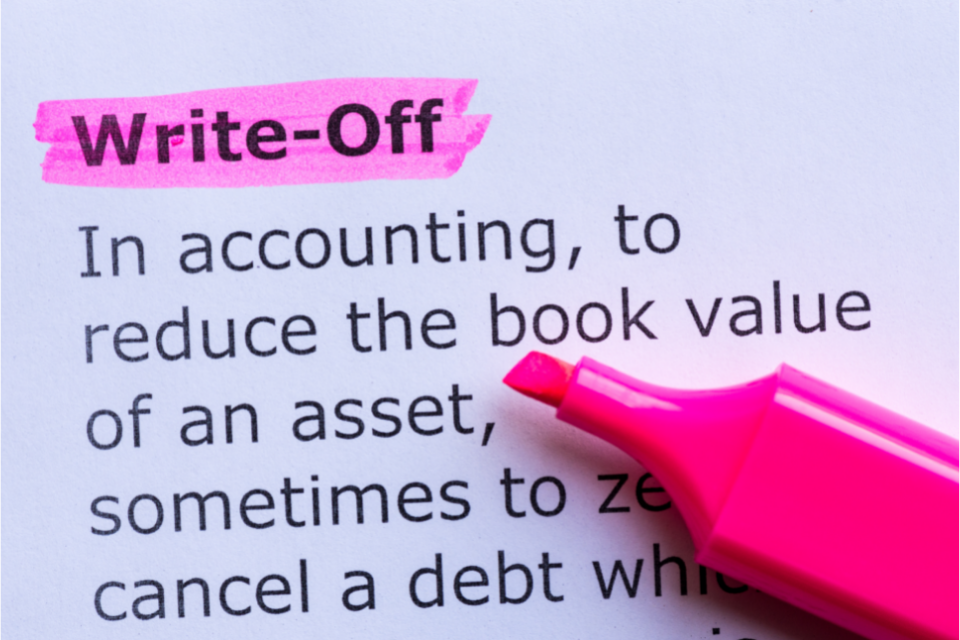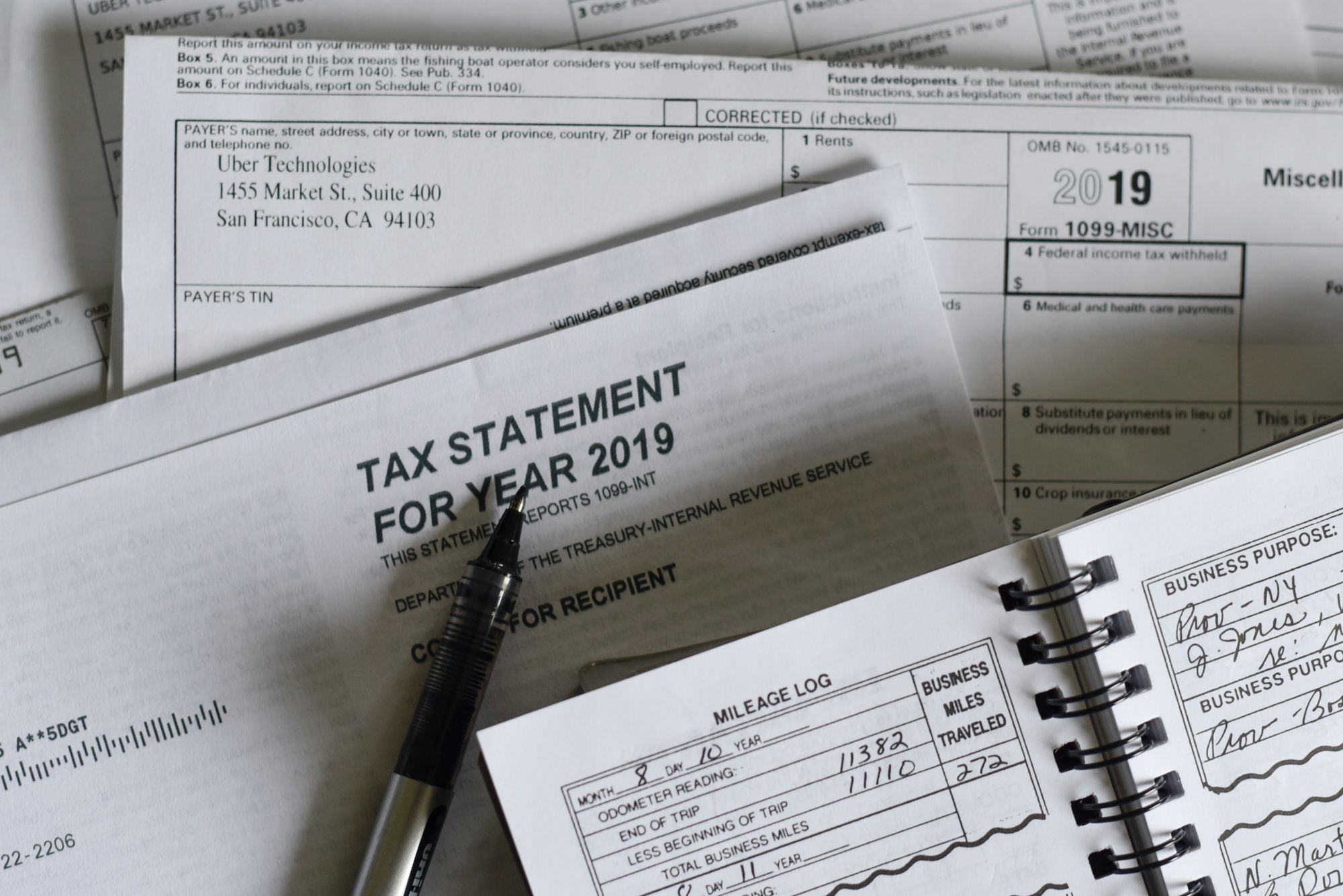Companies must account for uncollectible accounts in their databases since consumers do not always maintain their pledges to pay. Uncollectible accounts are managed in one of two ways by businesses which are given below:
- The direct write-off method
- The allowance method
The direct write-off technique, which is required for federal income tax purposes, identifies when bad accounts as an expense are deemed to be uncollectible
The allowance approach, similar to putting money in a reserve account, anticipates uncollectible accounts. The allowance method is the standard technique for recording uncollectible accounts for financial accounting objectives and represents the accrual foundation of accounting.
We'll look at the direct write-off method, its description, and how it works in this article.
Table of Content
- What is the Direct Write-Off Method?
- Pros & Cons of Direct Write-Off Method
- Problem Between The Direct Write-Off Method and GAAP
- Direct Write-off Method Vs. Allowance Method. Which is Better?
- Examples of the Direct Write-Off Method
- How Can Deskera Payroll Help?
- Final Words
What is the Direct Write-Off Method?
The majority of firms function on the basis of consumer credit sales. Accounts receivable are used to account for these funds. The majority of these debts are paid promptly or without delay by the consumer. Uncollectible debts, on the other hand, are a terrible event in business. There are two strategies for dealing with uncollectible bad debts in bookkeeping: the direct write off approach and the allowance method.
On the income statements, the allowance approach is utilised to account for bad debts. The IRS requires the write-off technique for bad debts. The allowance approach is less precise than the direct write-off method since it employs an anticipated amount.
The bad debts expense account is debited and the accounts receivable is credited under the direct write-off technique. An unpaid invoice is a credit in the accounts receivable account, as opposed to the customary approach. This is because accounts receivable is an asset that grows in value when debited.
You can deduct bad debts from your total taxable income when filing a company tax return. For IRS tax returns, the direct write-off approach is required, as the allowance method is insufficiently precise.
Pros & Cons of Direct Write-Off Method
Pros
- Straightforward procedure: The direct write-off technique is a straightforward approach to dealing with outstanding obligations. For each outstanding invoice, you only need to record two transactions, giving you more flexibility in terms of scheduling.
- Tax deductions: According to the IRS, you can write off your bad debt on your annual tax returns. The IRS, on the other hand, will not accept bad debts written off using the allowance technique since it relies on guesses rather than exact facts.
- Precision: The direct write-off approach eliminates financial reporting problems since it is based on accurate numbers gathered straight from invoices.
Cons
- It goes against the matching principle: It violates the matching principle in accounting, which states that costs must be recorded in the same period in which they were spent. With the direct write-off approach, bad costs may not be noticed until later, resulting in a mismatch.
- It can cause inaccuracy: The timing mismatch noted before could lead to an error in your company's balance statement. Crediting accounts receivables might result in an overstatement of earnings.
- It causes GAAP violations: Because of these errors, GAAP prohibits the use of the direct write-off technique. Financial statements may not reflect a company's genuine financial situation.
Problem Between The Direct Write-Off Method and GAAP
According to the Houston Chronicle, the direct write-off procedure violates generally accepted accounting rules (GAAP).
Costs and revenue must match throughout the entire accounting period, according to GAAP. The loss, however, may be recognised in a different accounting period than when the original invoice was submitted if you use the direct write-off technique.
This implies that the loss is being stacked up on the income statement against the revenue that is unrelated to the project when it is represented as an expense. Total revenue is now incorrect in both the period in which the invoice was recorded and the period in which the bad debt was expensed.
The balance sheet will reflect greater revenue than was earned, which is against GAAP rules. This is why GAAP prohibits financial reporting using the direct write-off approach. When preparing financial statements, the allowance technique must be employed.
Direct Write-off Method Vs. Allowance Method. Which is Better?
When you employ the allowance technique, you estimate how much bad debt you'll have to account for over the course of the accounting period. This represents the revenue generated during that time period. However, it is based on a guess as to which outstanding bills will become bad debts in the long term.
Directly writing off bad debt is only done when you are confident that the invoice is uncollectible. The direct write-off approach is simpler for organisations with less accounting knowledge because it simply requires a single journal entry. It accurately tracks the loss rather than making estimations. However, it distorts revenue and outstanding amounts for the invoice's accounting period, as well as bad debts.
Allowance Method
In the same time period as the invoice was raised, the allowance approach accounts for the bad debt of an unpaid invoice. When a corporation utilises the allowance technique, it must examine its accounts receivable or unpaid bills and estimate the amount that might become bad debts in the future. The bad debts expenditure account is debited for this estimate. It's credited to a counter account called an allowance for questionable accounts.
Direct Write-Off Method
The amount of the bad debt is accounted for in the time period when it is determined that the amount is uncollectible under the direct write-off method. This is generally not during the same accounting period that the invoice was issued.
The real amount of the bad debt is deducted from the bad debt expense account. The identical amount is credited to the accounts receivable. This has a direct influence on sales as well as the company's outstanding balance. It results in inaccuracies in revenue and outstanding dues for both the initial invoice accounting period and the accounting period after it is designated as a bad debt.
Examples of the Direct Write-Off Method
- Let’s take a look at an example
Assume Ariel's Bracelet sells handcrafted jewellery to the general public. Many of Ariel's frequent clients pay on account. Ariel has yet to receive money from a customer who purchased a bracelet for $100 a year ago. After repeated attempts to reach the customer, Ariel concludes that she will never receive her $100 and chooses to close the account.
Ariel would merely debit the bad debt expense account for $100 and credit the accounts receivable account for the equivalent amount using the direct write-off approach. This essentially cancels the receivable and reflects Ariel's loss from the credit-worthy client.
If Ariel gets payment from the customer later, she can credit bad debt and debit accounts receivable to reverse the write-off journal entry. Ariel may then enter a debit to cash and a credit to accounts receivable to record the cash receipt.
2. Let’s take a look at another example
In exchange for $ 5,000, an accounting firm compiles a company's financial accounts in accordance with applicable legislation and delivers them over to the company's directors. For the past year, the pay has been exceptional. The firm is following up with the Company's directors on a regular basis, but they are not responding. The company then debits $ 5,000 from Bad Debts Expenses and credits $ 5,000 from Accounts Receivables. The firm's partners decide to write off these $ 5,000 receivables as non-recoverable Bad Debts.
3. Yet, another example
Let's imagine you spent $600 on a wedding cake for a couple. After completing the cake, you send them a $600 invoice. In this scenario, $600 would be credited to your company's revenue, while $600 would be debited from accounts receivable. You realise after a few months of attempting to collect on the $600 invoice that you will not be paid for your services. Using the direct write-off technique, a debit of $600 will be recorded to the bad debt expense account, and a credit of $600 will be made to accounts receivable. The original transaction would be reversed.
How Can Deskera Payroll Help?
Payroll management and employee management are integral to any organization. If you are looking for a holistic and automated tool to manage payroll, employees, expenses, contractor management, Deskera People could be the apt solution.
Process your payroll now with Deskera People
Final Words
The direct write-off technique is the most straightforward way to book and record a loss on uncollectible receivables, although it violates accounting standards. It also guarantees that the loss recorded is based on actual statistics rather than estimates. However, it goes against GAAP, matching ideas, and a truthful and fair representation of the financial statements.
After analysing all of these factors, it is decided that just recording a transaction is not a condition of an accounting transaction. It must follow the norms and legislation established by the organisations for transaction accounting in order to present a true and accurate image of the financial statements to the entity's stakeholders.
As a result, using the Direct Write-off Method to book for uncollectible receivables is not recommended. Instead, the corporation should look into other options for booking bad debts, such as appropriation and allowance.
Related Articles











